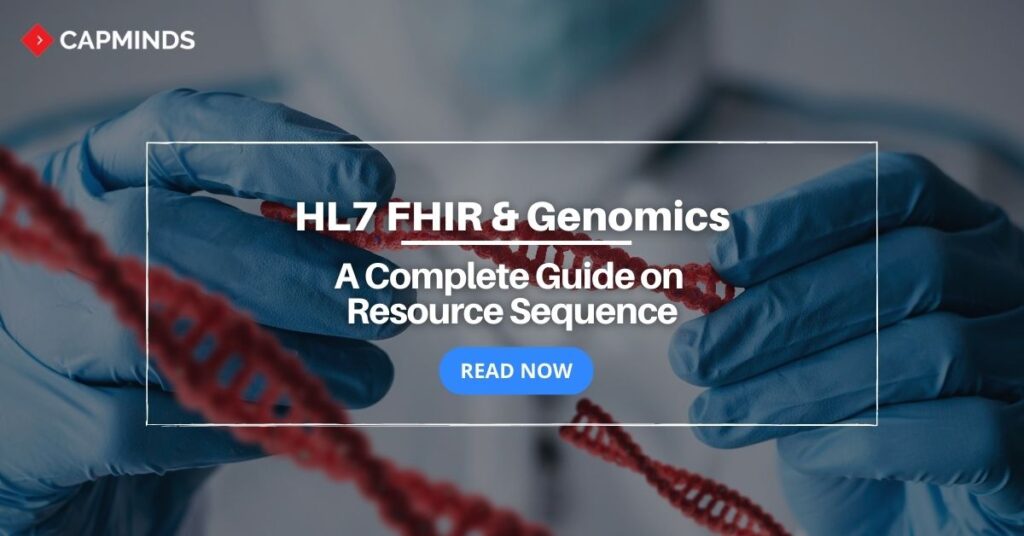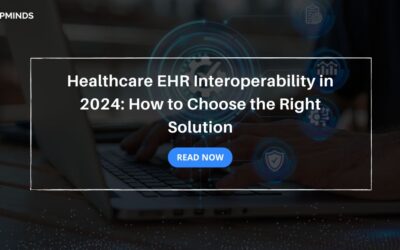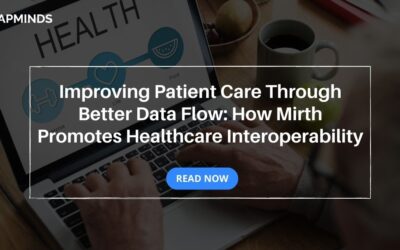HL7 FHIR & Genomics: A Complete Guide on Resource Sequence
In the ever-evolving landscape of healthcare, two powerful forces have converged to redefine the future of precision medicine: HL7 FHIR (Fast Healthcare Interoperability Resources) and genomics.
RELATED: HAPI FHIR: Connecting Interoperability Dots for Healthcare
This complete guide will take you on a journey through the intricacies of using FHIR to manage genomic data, unlocking a new era of personalized healthcare.
RELATED: HL7 FHIR & EHR Data Transmission: 9 Easy Steps to Implement
The Genomic Revolution
Genomics, the study of an individual’s complete set of DNA, has opened unprecedented possibilities in healthcare.
It allows us to delve deep into a patient’s genetic makeup, identifying genetic variations, and predispositions to diseases, and tailoring treatments for optimal outcomes. However, managing and exchanging this vast amount of genomic data efficiently has been a formidable challenge – until the emergence of FHIR.
Understanding HL7 FHIR
Before diving into genomics, let’s grasp the essence of FHIR. It’s a modern healthcare interoperability standard designed to facilitate the exchange of healthcare information in a structured and standardized format.
Think of FHIR as a universal language for healthcare data, ensuring that information can be shared seamlessly between different systems and healthcare providers.
Genomic Data in FHIR
Genomic data is incredibly complex and diverse. It encompasses a wide range of information, from raw sequencing data to interpreted variants and clinical implications. To manage this complexity, FHIR introduces the concept of ‘Sequence’ resources.
The Sequence Resource
In FHIR, a ‘Sequence’ resource is the backbone for representing genomic data. It provides a structured way to capture genetic information, including DNA, RNA, and amino acid sequences. Let’s break down the key components:
- Type: Sequence resources can represent DNA, RNA, or amino acid sequences, making them versatile for various genomic data types.
- Variants: ‘Sequence’ resources allow the inclusion of variants, which are specific changes or mutations in the genetic sequence. These variants can be associated with diseases or drug responses.
- References: Genomic sequences often need to be linked to references like genome assemblies or other sequences. FHIR accommodates these references, ensuring the context is clear.
- Quality: Maintaining data integrity is crucial in genomics. FHIR’s ‘Sequence’ resource includes quality information, ensuring the reliability of the data.
- Annotations: Genomic data is often enriched with annotations, such as gene names, functional elements, and clinical significance. FHIR supports the inclusion of these annotations.
Genomic Variation
Understanding genomic variation is pivotal in personalized medicine.
FHIR provides resources like ‘Sequence’ and ‘Variant’ to capture and convey this information effectively. It enables providers to assess a patient’s genetic makeup and its potential impact on health.
Interoperability in Genomics
- One of FHIR’s greatest strengths is its interoperability
- Genomic data is rarely confined to a single system or institution
- FHIR ensures that this data can flow seamlessly between different healthcare entities, allowing for comprehensive genetic assessments and personalized treatments, regardless of the source of the data
Clinical Genomics
The real power of combining FHIR with genomics is unleashed in clinical settings. Imagine a scenario where a patient’s genomic data is stored in FHIR-compliant EHRs (Electronic Health Records). Here’s how this synergy transforms healthcare.
1. Personalized Treatment Plans
- Providers can access a patient’s genetic information directly from their EHR
- Armed with this data, they can tailor treatment plans, medications, and interventions to the patient’s unique genetic makeup
- This level of personalization maximizes treatment efficacy and minimizes adverse effects
2. Disease Risk Assessment
- FHIR-enabled EHRs can include genomic data in patient records
- This means that providers can assess a patient’s risk of developing certain diseases based on their genetic predispositions
- Early intervention and preventive measures become more precise
3. Pharmacogenomics
- Genomic data can influence how a patient responds to medications
- FHIR’s interoperability ensures that pharmacogenomic information is readily available to healthcare providers
- This prevents adverse drug reactions and optimizes medication selection
Challenges and Considerations
While the integration of genomics into FHIR heralds a new era in healthcare, it’s not without challenges.
- Data Security: Genomic data is highly sensitive. Robust security measures must be in place to protect patient privacy
- Data Standards: Establishing consistent standards for genomic data representation is an ongoing effort
- Ethical Considerations: Handling genomic data raises ethical questions, including consent and data ownership
The Future of Healthcare
The fusion of HL7 FHIR and genomics is reshaping the future of healthcare.
It’s ushering in an era where treatments are tailored to the individual, diseases are predicted before symptoms manifest, and medications are chosen with pinpoint accuracy. This convergence of technology and biology promises to make healthcare not just reactive but proactive, preventive, and personalized.
As genomics continues to advance and FHIR evolves, the possibilities are limitless. We’re on the cusp of a healthcare revolution where the code of life meets the code of data standards, and the outcome is healthier, happier lives for us all.
HL7 Integration Services from CapMinds
CapMinds Technologies offers the perfect all-in-one Health Interoperability solutions for your clinical needs. Our HL7 FHIR services ease the innovatory exchange to create new possibilities. Our client-centered services keep them in the limelight. Our clinical & HL7 integrations enable EHR-integrated laboratory, imaging, e-prescriptions, EPCS, pharmacy, and much more. These enhance the activation process for your individual and collective needs.
“CapMinds Technologies is the place that will make you achieve your goals by combining “Expertise+Hardwork+Commitment”
CapMinds FHIR APIs services cover your patients’ health data with the greatest security, privacy, and confidentiality. We update ourselves with the latest versions like HL7 Version 2, Version 3, HAPI FHIR, SMART on FHIR, CDA, X12, HAPI FHIR, Mirthconnect, and security standards. CapMinds offers the best HL7 integration and HL7/FHIR interface development services for the federal government, health tech startups, laboratories, clinics, and practices.
“Unite with us to get the most benefits of our HL7 integration services and rise to be the first”




